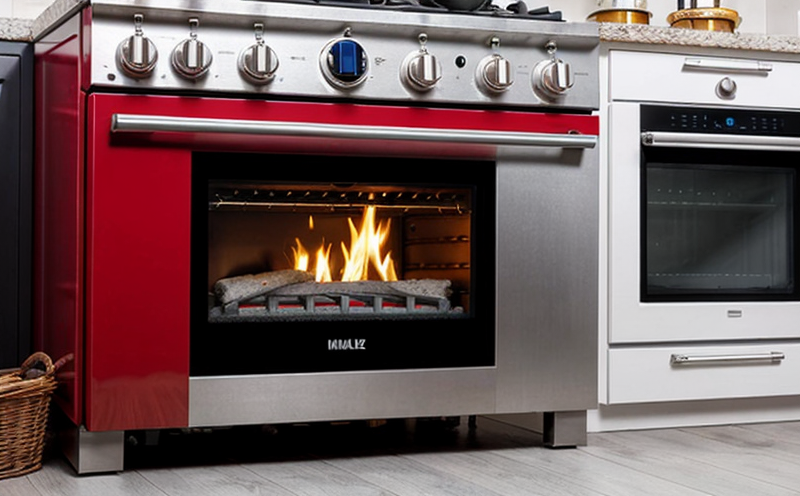ASTM D635 Flammability Testing of Appliance Plastic Components
The ASTM D635 flammability test is a critical procedure used to evaluate the fire safety performance of plastic components found in household appliances. This test is essential for ensuring compliance with international standards and regulations designed to protect consumers from potential hazards associated with flammable materials.
During this test, specimens are exposed to a specified flame source under controlled conditions. The objective is to measure how the material behaves when subjected to fire, including its ignition temperature, time to ignite, and the rate of burning. This information is vital for manufacturers as it helps them understand not only whether their products meet safety standards but also where improvements can be made.
The test procedure outlined in ASTM D635 provides detailed instructions on specimen preparation, apparatus setup, and data collection. Specimens must be precisely cut to ensure accurate results. The testing environment is rigorously controlled to prevent external factors from influencing the outcome.
Accurate reporting of results is crucial for making informed decisions about product design and material selection. Reports generated from ASTM D635 testing provide valuable insights into the flammability properties of plastic components, enabling manufacturers to enhance their products' fire safety features effectively.
The importance of this test cannot be overstated in today's world where consumer electronics and appliances play a significant role in daily life. By conducting ASTM D635 tests regularly, companies can ensure they are meeting the highest levels of safety standards set by regulatory bodies around the globe.
- Enhanced Consumer Safety: Ensures that plastic components used in household appliances do not pose a fire hazard to users.
- Regulatory Compliance: Helps manufacturers meet stringent international regulations regarding flammability limits for plastics.
- Informed Design Decisions: Provides data necessary for improving product designs and selecting safer materials.
The ASTM D635 test is just one part of a broader strategy that includes other forms of testing aimed at enhancing fire safety within household appliances. By incorporating this procedure into their quality assurance processes, manufacturers can significantly reduce the risk associated with flammable plastics.
Customer Impact and Satisfaction
The implementation of ASTM D635 testing brings tangible benefits to both manufacturers and consumers alike. For manufacturers, it offers an opportunity to innovate while maintaining rigorous safety standards. Consumers benefit from products that are safer, more reliable, and compliant with international regulations.
Incorporating ASTM D635 into the production process not only enhances brand reputation but also fosters customer trust. Regular testing ensures continuous improvement in product quality, which ultimately leads to higher satisfaction levels among end-users.
Moreover, by adhering to this standard, manufacturers demonstrate their commitment to public safety and environmental responsibility. This aligns with growing consumer demand for sustainable practices across industries. As a result, businesses that prioritize ASTM D635 testing are more likely to see increased loyalty from customers who value these attributes.
International Acceptance and Recognition
ASTM D635 is widely accepted in many countries due to its comprehensive approach to evaluating plastic flammability. Its recognition extends beyond just the United States; it is also adopted by organizations like the European Committee for Standardization (CEN) under standard EN 1974.
The international acceptance of ASTM D635 stems from its ability to provide consistent and reliable results across various regions. This consistency allows manufacturers to conduct tests in different locations without compromising on accuracy or repeatability.
Recognition by major standards bodies further reinforces the credibility of this testing method. Compliance with ASTM D635 can therefore serve as a benchmark for quality assurance, helping companies gain market entry into diverse geographical areas more easily.
Use Cases and Application Examples
The application of ASTM D635 flammability testing is extensive across various sectors where household appliances are used extensively. From kitchen appliances like stoves and ovens to electronics such as televisions and refrigerators, the use cases span a wide range.
For instance, in the case of a microwave oven, ensuring that its plastic components comply with ASTM D635 standards is essential for preventing fires during operation. Similarly, in televisions, the housing made from flammable plastics could potentially catch fire if not tested properly according to this standard.
Manufacturers often use ASTM D635 results as part of their broader quality assurance programs aimed at reducing risks associated with electrical and electronic products. These tests contribute significantly towards creating safer environments for consumers worldwide.





